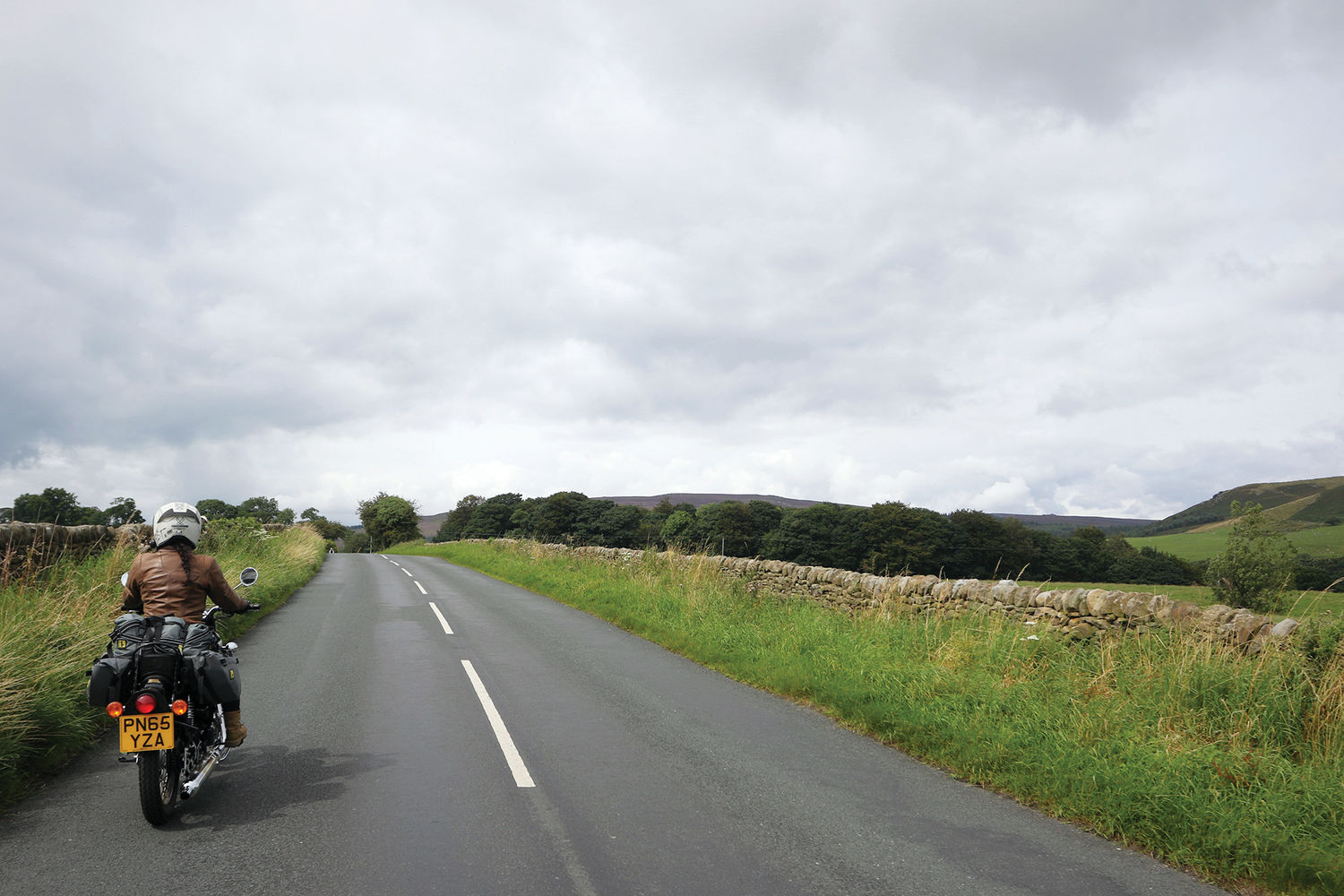England on Enfields: Stay Left, Look Right

“Look for Big Al. Tell him Tall Paul sent you …” With a wave, these words end our first black cab ride in London. Who’d have thought our cabbie would know someone at the one Royal Enfield dealer in East London, where we are staying, on a trip that will have us riding two Enfields—a Bullet 500 and a Continental GT—counter-clockwise around England.
Mitcham is where our vessels await, so south we’re heading on yet another encouraging black cab ride. Drivers of these iconic taxis spend about four years and more than 40,000 miles learning every nook and cranny, point of interest, and payphone (probably) in the London expanse—on a scooter, no less! Unsurprisingly, most of the professional drivers we would encounter had a connection to the motorcycle industry, if not a common interest in motorcycle travel. And this theme carries on through most of our trip. Enfields are to England as Indians are to Americans. Both began manufacturing motorbikes in 1901. Both have had direct, local competition since their inception. And as far as history is concerned, they weren’t the victors. Hell, both went out of business. Both have tried to bring their brand back into the mainstream—one more than a few times. And now, we’re seeing the revived and the newest on streets and under aficionados around the world. But unlike the American heritage label, the Enfield Cycle Company began as a weapons manufacturer—as evidenced by Royal Enfield’s logo (a cannon) and motto: “Made like a gun.” They’re tough in a different sort of way, lasting not because they’ve reinvented themselves but because they know where they stand and have rooted themselves into their niche market.
I’ll admit: on our first few rides with the Enfields, we were not impressed. The Bullet’s respectable 26 bhp just didn’t have the oomph I craved on the freeway. The slender tires made navigating thick gravel a precarious occasion, and with all my gear aboard, it was top-heavy, adding to the already 425-pound curb weight. For Justin, the mildly rear-set controls and café racer seating position on the Continental GT were less desirable for logging big miles. The single-cylinder bike buzzed nearly as much as my equally numbered moto on the M (England’s motorways, much like our interstates), and the power was akin to its “vintage” appeal. But after exiting the congested roads and entering the S-curves of England’s prettiest paved pathways, we found the place where Royal Enfield rules.

Who’s Asking?
Both bikes are beautiful, yes. But as we bob and weave and practically glide through the hilly landscapes at speeds just under 60 mph, the Enfields dance gracefully—so much so they disappear from under us for the extra hours it takes to ride the “slow way.” The Bullet 500 is teaching me the benefits of patience, of seeing a place and not just blasting through it. The brilliant GT unleashes its abilities, whisking Justin out of sight down the narrowing lanes and tight bends of the English countryside. It’s as if they were meant to cruise the curvature of the U.K. This is all relative, of course. The “dance” is less a smooth tango or ballet than one stomped at a barnyard hoedown. But if motorcycling, like dance, is about being free and feeling good, then the Royal Enfields do their jobs.
Motorcycles & Gear
2016 Royal Enfield Continental GT
2016 Royal Enfield Bullet 500
Helmets: Icon Airframe Pro Construct
Jackets: Icon 1000 The Hood, Icon 1000 Fairlady
Pants: Tellason John Graham Mellor Jeans, Tellason Denim Bird Jeans, MotoGirl Full Kevlar Leggings
Boots: Danner Boots USMC Rat 8”
Gloves: Icon 1000 Rimfire, Icon 1000 Cheeter, Icon Raiden DKR
Luggage: Wolfman Luggage Skyline Saddlebags, Tankbag, and Duffle Bags, Colfax Design Works Daypack
Communication: Sena 10S Bluetooth Communication System
In the afternoon of our August arrival overseas, the two of us walk to TTT Motorcycles, the Royal Enfield concept store in Bethnal Green (East London to those who only experience the city in gangster movies and BBC dramas). Two doors to two separate rooms appear before us on a busy street. Stepping through the first door is like walking into someone’s personal storage. Bikes and scooters are crammed, ever so carefully, like sardines into the halogen-lit rectangular room with only one clear aisle. Directly across the entrance down that single path sits a big wooden desk occupied by an average-sized man of ambiguous origin who gives us no mind aside from an obligatory “hello.” Until we appear curious. “Scooters or motorbikes?” he asks. “Actually, we’re looking for Big Al?” It shouldn’t have been a question, but caution controlled my inflection. “Who’s asking?” “Well …” I stumble a bit. “We were sent by Tall Paul.”
